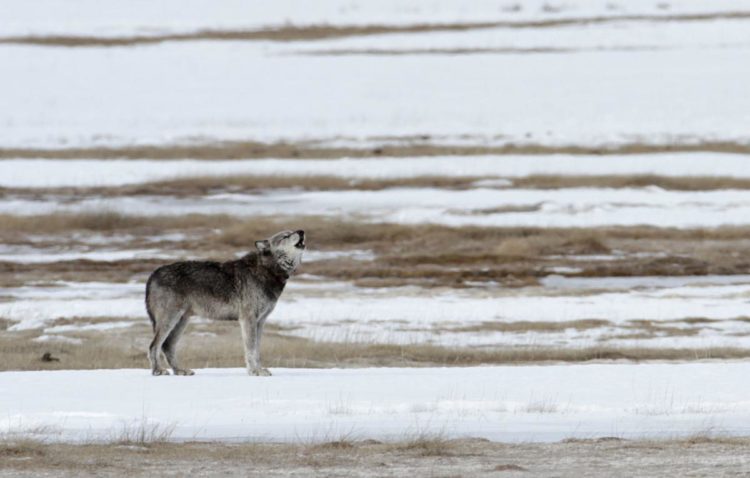
2017 Yellowstone Wolf Report Will compare to the coming report
Gathering data to support the Howl for Our proposed “Sacred Resource Protection Zone” surrounding our National Parks
YELLOWSTONE NATIONAL PARK — Last Years Yellowstone Wolf Project Annual Report for 2017. It reveals the cause of most known wolf deaths in the park.
“There were at least 97 wolves in 11 packs (three breeding pairs) living primarily in Yellowstone National Park at the end of December 2017,” the report reads.
The report states that packs varied in size and could have anywhere from two wolves to 21 wolves at an average of about nine wolves per pack.
According to the report, 21 wolf puppies survived to the end of the year. However, five of the 11 packs had total litter loss. More than half of the pups in the park were found at Wapiti Lake.
The report states that for four months of the year, the park closely monitored wolf predation, which took place in winter, spring and summer. The report stated that wolves feed on elk more than others, but the killing of bison and mule deer could be on the rise.
“Project staff detected 233 kills that were definitely, probably or possibly made by wolves in 2017: 150 elk (64.4 percent), 31 bison (13.3 percent), 12 mule deer (5.2 percent), eight deer of unknown species (3.4 percent), seven coyotes (3.0 percent), three white-tailed deer (1.3 percent), two snowshoe hares (0.9 percent), one wolf (0.4 percent), one pronghorn (0.4 percent), one badger (0.4 percent), one moose (0.4 percent), one golden eagle (0.4 percent), one otter (0.4 percent) and 14 unidentified animals (6.0 percent),” according to the report. “The composition of wolf-killed elk was 24.0 percent calves, 5.3 percent yearlings, 32.0 percent adult females, 30.0 percent adult males, 4.7 percent adults of unknown sex and 4.0 percent of unknown sex and age.”
According to the report, four wolves died in 2017 that were radio-collared. One was kicked by an ungulate. Another died of canine distemper virus or CDV. A third died to unknown causes due to the fact that the corpse was decomposing in a remote area, and by the time they found it, they couldn’t determine cause of death. Another wolf was killed by other wolves. All wolves with collars ranged from 6 and a half years to 8 years old.
“The wolf that died after being kicked several times by an ungulate was a female pregnant with five pups (three males, two females) that all died,” read the report. “They were within a week of birth.”
This wolf, according to the report, was the alpha of the Eight Mile pack for six years but died in April. One of her daughters, 821F, took over as alpha and gave birth to five pups. But she was then killed, only weeks after giving birth, by other wolves who were possibly from Junction Butte pack.
“Likely, her pups all died, and her death left the pack with no working radio collars,” the report read.
According to the report, the wolf that died of CDV was an alpha male in Lamar Canyon.
“Observers at first noted mucous in his eyes, weight loss and unsteady back legs, and within one week, the symptoms advanced to near-complete paralysis,” the report reads. “Lab results confirmed he died of canine distemper virus, and the virus in his particular case was concentrated in the nervous system.”
It appears that several pups have been victims to CDV and died.
According to the report, there were six more un-collared wolf deaths in 2017, which were all caused by humans.
“Five were harvested during the wolf hunting season in Montana (one old adult, three adults and one pup), and one was illegally shot inside park boundaries and had to be euthanized by park staff,” the report read.
It is unclear if the five legally hunted wolves were hunted inside the park. But all were documented by park staff.
According to the report, there were 26 wolves from eight packs that got captured and collared in 2017. Ten of the 26 wolves had their collars replaced because they were old or malfunctioning.